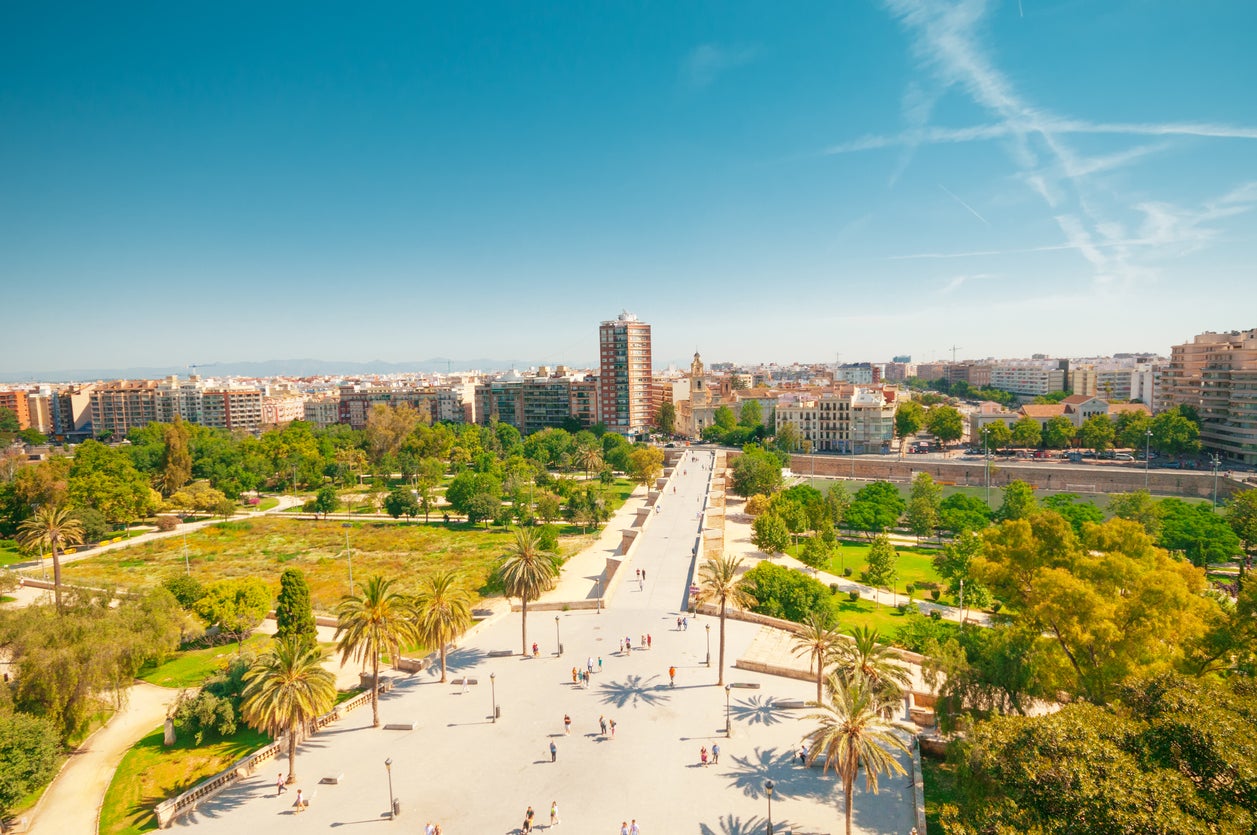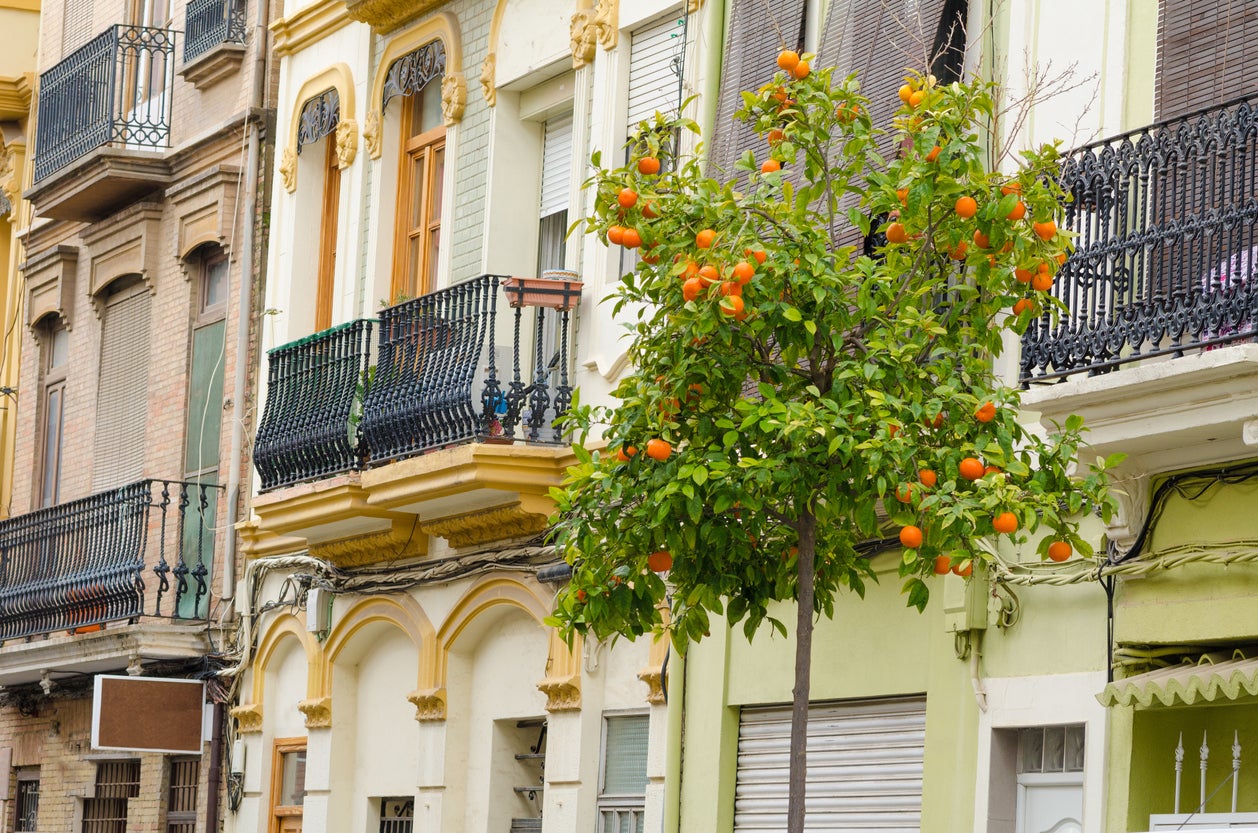Why Valencia should be your first choice for an arty city break post-lockdown
With the news that quarantine rules and FCO travel restrictions are lifting for Spain from 10 July, there’s never been a better time to check out this coastal gem, says Clare Vooght

A pretty old town, orange trees, proximity to golden, sandy beaches, being the birthplace of paella... Valencia has always had a lot going for it. And it can add good design to that list too, as the city gears up to be the World Design Capital (WDC) for 2022.
Every two years, the World Design Organisation bestows this title upon a city that has transformed itself through design, with previous winners including Seoul, Mexico City, Helsinki and most recently Lille. And from sci-fi architecture on the waterfront to a flood-prone river that was diverted and turned into Spain’s biggest urban park, Valencia has boundary-pushing design in spades.
The city on Spain’s east coast was gaining popularity – with visitor numbers up by 8.7 per cent in 2019 – before the pandemic put paid to travel. Now that Spain is back on the menu, with both the Foreign Office travel restrictions and the mandatory two-week quarantine for returning travellers lifted (the latter from 10 July), an arty weekend trip to see Valencia’s design hotspots could be the perfect post-lockdown city break.
“The city has changed a lot during the last three or four decades – changes led by design through projects, like the old river bed turned into one of the largest public gardens you’ve ever visited,” says Xavi Calvo, Valencian graphic designer and director of the city’s WDC candidacy. “We have a strong heritage in architecture and design, with significant industries like ceramics, silk, furniture or graphic arts that have shaped what we are today.”
The city is filled with galleries, design boutiques, beautiful restaurants and impressive architecture – both historic and modern. Here are the key spots to visit on an arty Valencian city break.
Architectural marvels
A walk around the futuristic City of Arts and Sciences is a must. From a dinosaur to a leg of jamon, these dazzling white buildings have been likened to all manner of things – but the Palau de les Arts Reina Sofia opera house, built by architect Santiago Calatrava in the 1990s, which also looks like Darth Vader’s helmet from the side, is the most impressive. Its massive shell-like metal exterior, clad in iridescent white ceramic Gaudi-style tile fragments, along with curvaceous, acoustically optimised interior architecture, makes this a true marvel. Take a tour to learn exactly how they engineered perfect acoustics here.

Other buildings in the complex include a plant walk with public sculptures, an aquarium, IMAX cinema and planetarium. And visitors can even rent a kayak to paddle around and explore some of the other buildings close-up.
Guiding Architects also runs architect-led cycle tours of the city that uncover its development since Roman times. The informative tours take in everything from the art nouveau Central Market (think Barcelona’s Boqueria Market before overtourism) and Nord railway station, complete with intricate tilework and stained glass ticket office, to the palm-lined stretches of the seemingly endless Riverbed Gardens.

For something completely different again, head out to the Cabanyal District, a fast-gentrifying seaside neighbourhood filled with beautifully tiled, colourfully painted traditional houses. Soak up the atmosphere on weekend mornings and do as locals do (kick back with a beer and a bocadillo for elevenses). Then check out the wood-and-concrete, church-inspired El Musical music hall, followed by drinks at open-air street food spot, Mercabanal.
Art galleries
Valencia’s galleries are more than just white rooms with paintings on the walls – they’re great examples of the city’s architecture and, in some cases, its history. A former pump factory, Bombas Gens has an Art Deco facade, a modernist garden with trees imported from South America and Asia, and a 1938-built air raid shelter right underneath the contemporary gallery space. Its no-smoking signage offers a crash course in typography from that era.
IVAM, Valencian Institute of Modern Art, covers everything from 1960s counter-culture to avant-garde sculptures by Julio González, with its huge sweeping staircase as a focal point.

Centre del Carme Cultura Contemporania is in an old convent with gothic cloisters, while Espai Tactel, in a converted apartment, has a focus on more experimental art.
Design stores
Forget fridge magnets and tacky tea towels – Valencia’s local design talent has you covered for souvenirs. Visit La Postalera for sculptural plant pots, artsy, locally designed postcards and cool collapsible cycle helmets by Valencian design brand Closca. Head to Poppyns for sustainable clothing and swing by the studio of local ceramicist Ana Illueca for one-of-a-kind ceramics or to try your hand at a pottery workshop (book ahead).
Restaurants with substance and style
Pelayo Gastro Trinquet is a dining concept with a difference – it’s attached to the only remaining pilota court in the city. Its recent redesign from sports cafe to well-heeled restaurant serving upscale local fare was intended to get people back into the local sport, which is a cross between tennis and volleyball. Dine below an overhead sculpture of an outstretched hand catching a pilota ball, then catch a game.

Other design restaurants include Habitual, which serves upscale Mediterranean comfort food with an edgy, light wood and monochrome design, and Lienzo: fine dining with quirky artist-palette plates and pretty presentation.
Travel essentials
Staying there
Rooms at the four-star Marques House Hotel have a classy neutral colour palate – with the occasional flash of tropical print. There’s a cosy cocktail bar downstairs and a chic sun-trap of a terrace on the roof.
Doubles from £88; marqueshouse.com.
More information
Visit visitvalencia.com
Join our commenting forum
Join thought-provoking conversations, follow other Independent readers and see their replies
Comments